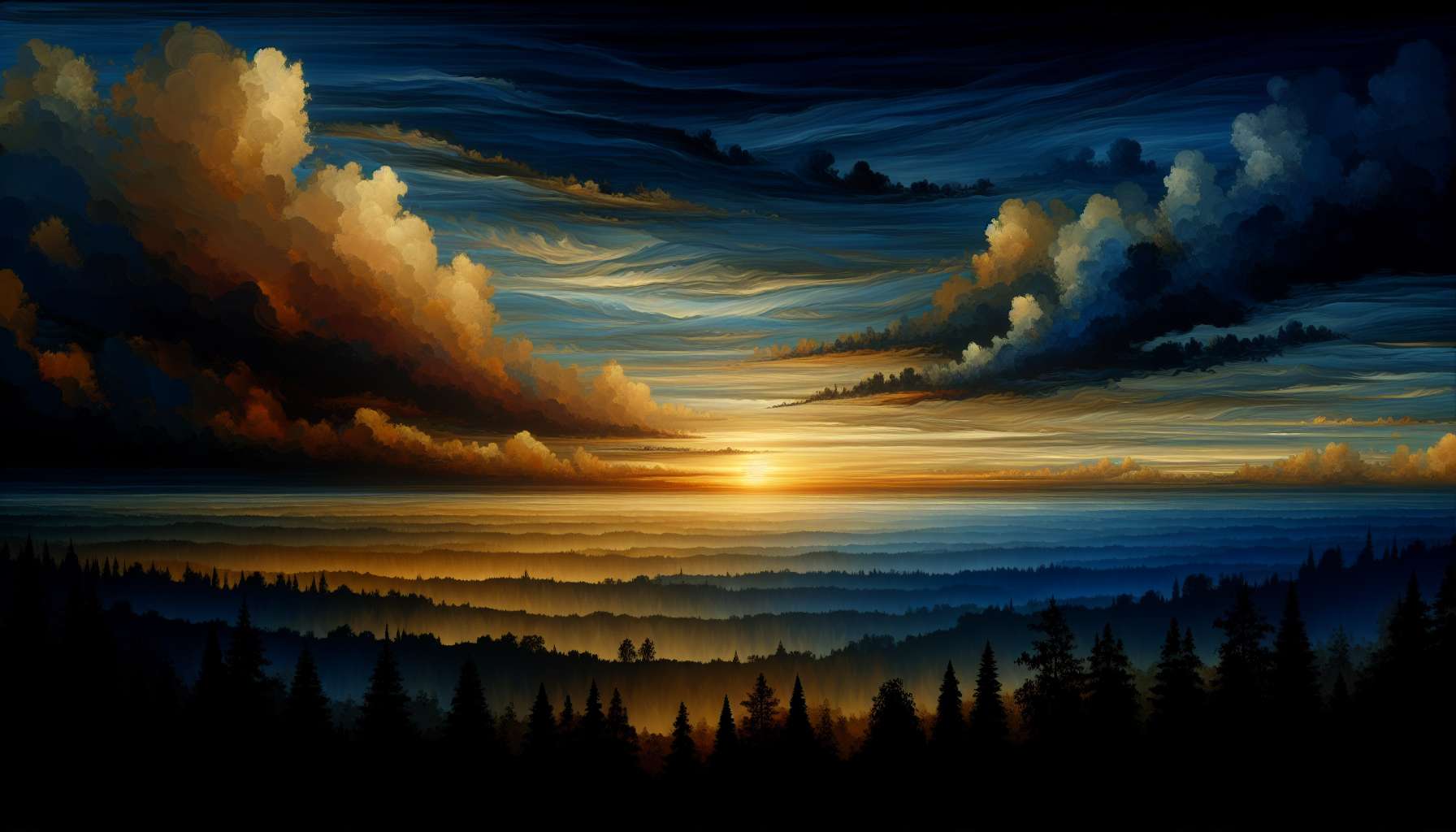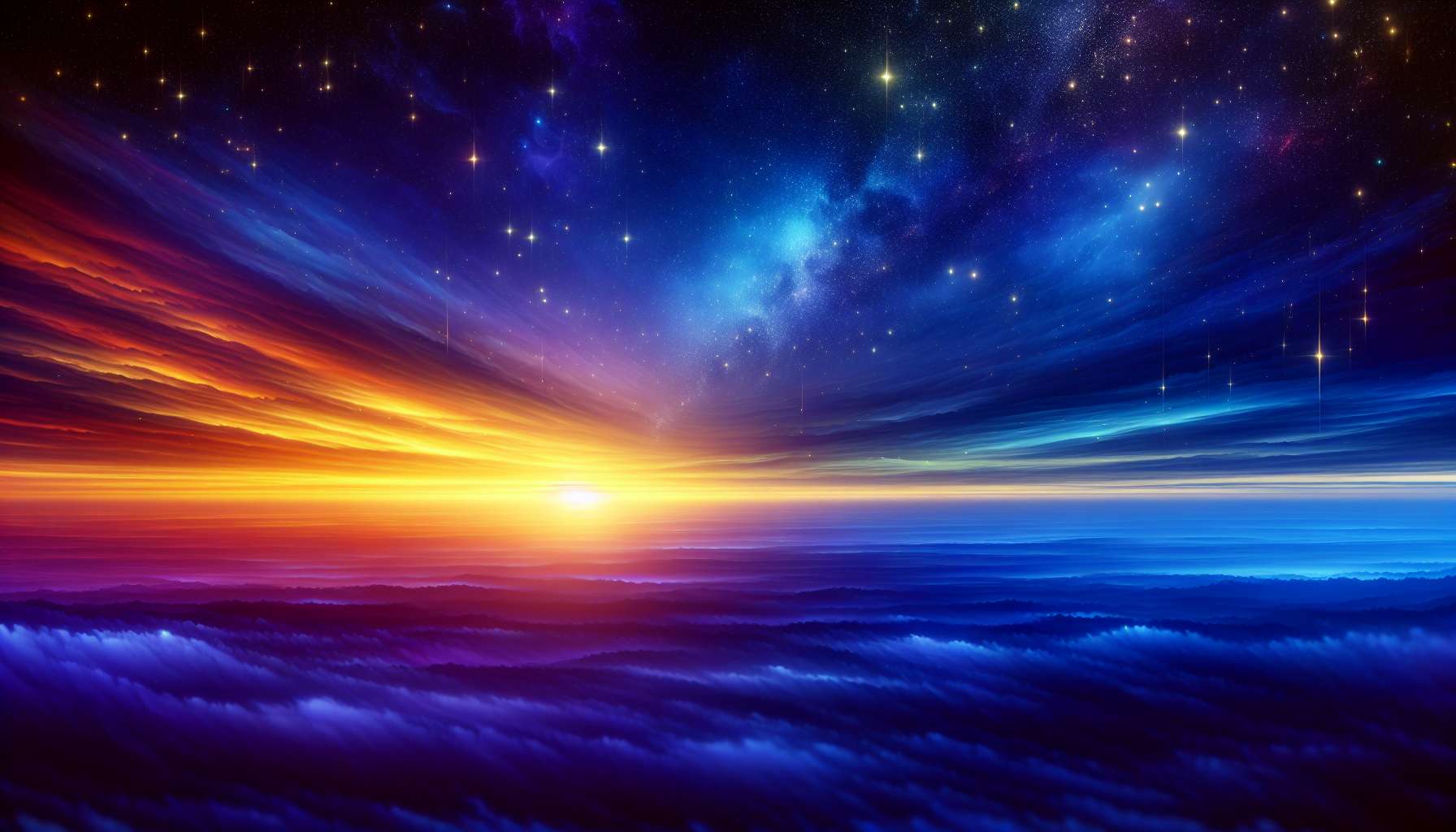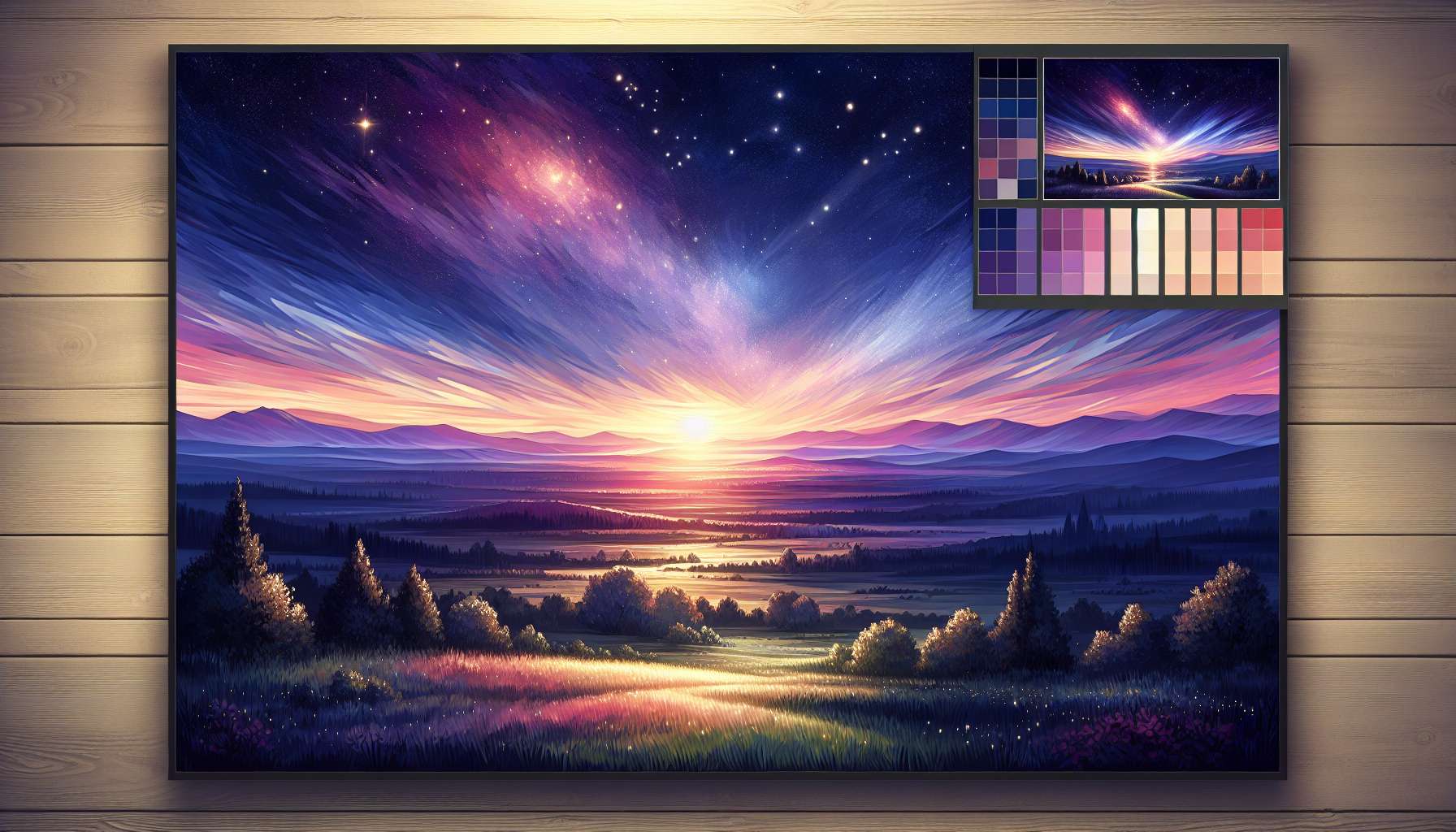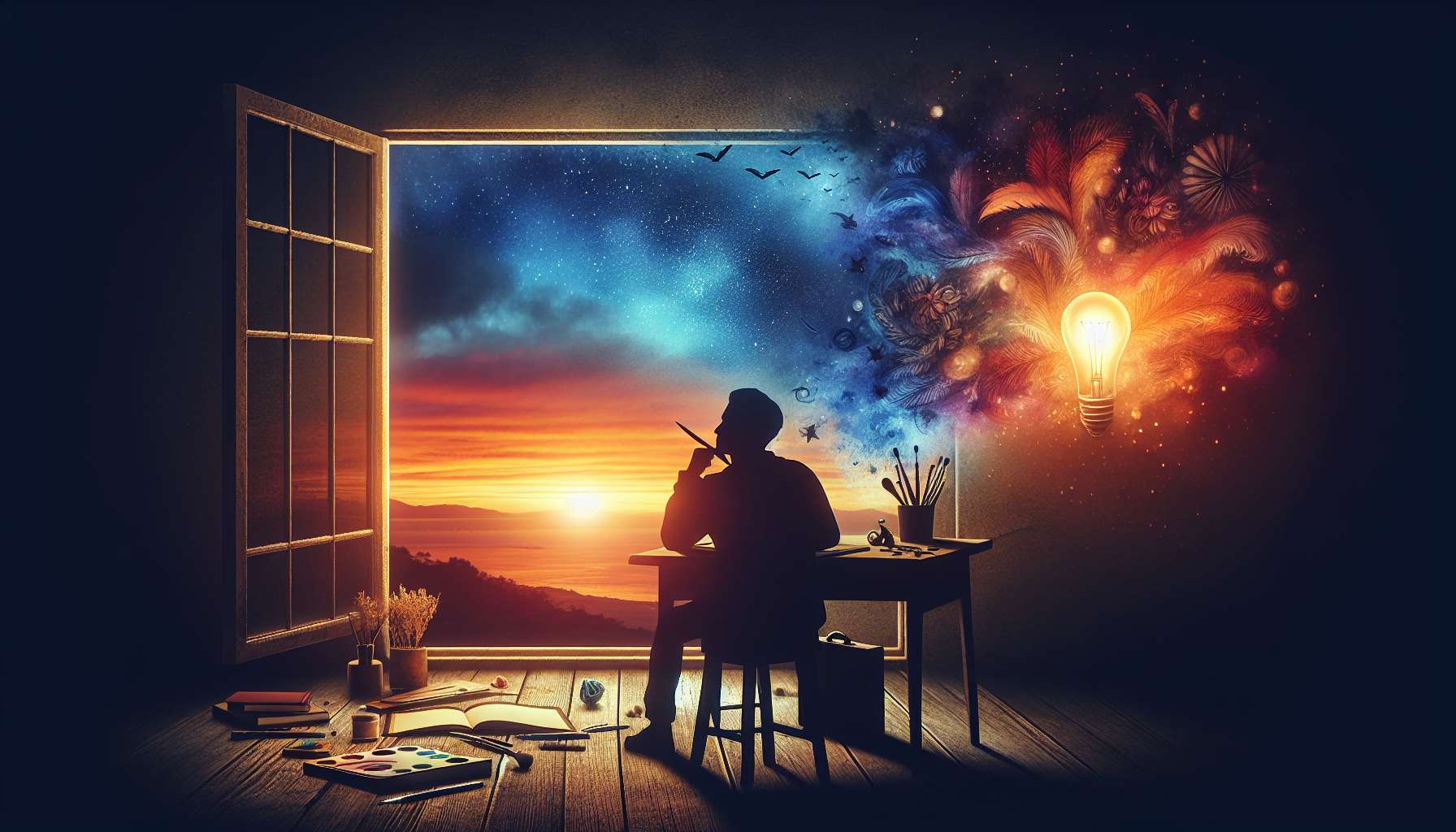Exploring Evening Sky Color Studies
Have you ever found yourself mesmerized by the breathtaking hues that paint the evening sky as the sun sets? The transition from daylight to twilight brings about a magical display of colors that captivates our senses and stirs our emotions. This natural phenomenon has long been a subject of fascination for artists, photographers, scientists, and sky enthusiasts alike. In this article, we delve into the realm of evening sky color studies, unraveling the mysteries behind the mesmerizing shades that grace the sky during dusk.
The Science Behind Sunset Colors
As the sun dips below the horizon, scattering of sunlight by the Earth’s atmosphere leads to the vivid array of colors that adorn the evening sky. The shorter wavelengths of light (blue and violet) are scattered more efficiently by the atmosphere, giving rise to the blue hues of the daytime sky. However, during sunsets, when the sun is lower in the sky, the longer wavelengths (red, orange, and yellow) dominate as they scatter less, creating the warm and fiery tones that characterize twilight.
This phenomenon, known as Rayleigh scattering, is responsible for the stunning gradation of colors observed during sunset. The scattering of light by molecules and particles in the atmosphere results in the dispersion of colors, producing the magical spectacle that captivates onlookers worldwide.
The Artistic Interpretation of Evening Skies
For centuries, artists have been inspired by the ethereal beauty of evening skies, capturing the rich palette of colors in their paintings and artworks. The interplay of light and shadow, the delicate transitions of colors, and the emotional impact of sunset hues have been a recurring theme in art history.
Impressionist painters, such as Claude Monet and Vincent van Gogh, are renowned for their masterful depictions of sunset scenes, where they skillfully portrayed the ephemeral beauty of the evening sky. Their use of bold strokes, vibrant colors, and innovative techniques revolutionized the representation of light and color in art, paving the way for modern interpretations of sunset landscapes.
Photographing the Magic of Dusk
With the advent of photography, capturing the mesmerizing colors of the evening sky has become more accessible to enthusiasts and professionals alike. Landscape photographers often chase the fleeting moments of sunset, seeking to immortalize the beauty of twilight through their lenses.
The golden hour, a period shortly before sunset or after sunrise, offers photographers a magical window of opportunity to capture the soft, warm light that bathes the landscape in a surreal glow. The play of light and shadows, the rich colors of the sky, and the dramatic silhouettes of trees and buildings create a visual symphony that is both captivating and inspiring.
Studying the Psychological Impact of Sunset Colors
Research in the field of psychology has also explored the emotional and psychological effects of sunset colors on human perception and behavior. Studies have shown that exposure to warm colors, such as those seen during sunsets, can evoke feelings of comfort, relaxation, and positivity.
The calming effect of sunset colors has been harnessed in various therapeutic practices, such as color therapy and relaxation techniques, where the use of warm hues is believed to alleviate stress, anxiety, and promote a sense of well-being. The subtle nuances of sunset colors play a vital role in shaping our moods and emotions, highlighting the profound connection between color and human psychology.
Technology and Artificial Sunset Displays
In the realm of technology and design, the mesmerizing colors of the evening sky have inspired innovative creations that mimic the natural beauty of sunsets. From ambient lighting systems that replicate the warm hues of twilight to digital displays that simulate the changing colors of the sky, technology has provided new avenues for experiencing the magic of dusk.
Architects, interior designers, and lighting experts often draw inspiration from sunset colors to create immersive environments that evoke a sense of tranquility and harmony. The use of soft, warm lighting, earthy tones, and reflective surfaces can transform spaces into serene oases that echo the serene beauty of twilight.
Environmental Implications of Sunset Colors
While the stunning colors of the evening sky are a source of wonder and inspiration, they also hold valuable clues about the health of our planet. Air pollution, dust particles, and atmospheric conditions can influence the intensity and clarity of sunset colors, serving as indicators of environmental quality.
Scientists and environmentalists monitor sunset colors as part of atmospheric studies to assess air quality, pollution levels, and the impact of human activities on the environment. Changes in the hues of the evening sky can reveal valuable insights into climate change, atmospheric composition, and the health of ecosystems, underscoring the interconnectedness of nature and human civilization.
Expert Opinions on Evening Sky Color Studies
Renowned astrophysicist Dr. Neil deGrasse Tyson once remarked, “The colors of a sunset can bring peace to the most troubled mind and solace to the weary heart. In the vast canvas of the universe, the evening sky is a masterpiece that reminds us of the beauty and fragility of our world.”
Dr. Emily Rice, an expert in astronomy and science communication, shared her insights on the significance of sunset colors, stating, “The hues of twilight are a testament to the intricate dance of light and atmosphere that defines our planet. Studying evening sky colors is not just a scientific pursuit but a journey of wonder and discovery.”
Common Misconceptions About Sunset Colors
One common misconception about sunset colors is that pollution enhances the vividness of hues in the evening sky. While pollutants in the atmosphere can contribute to scattering of light and alter the colors of sunsets, the presence of excess pollutants can actually diminish the clarity and brilliance of sunset colors, leading to dull and hazy skies.
Another misconception is that the colors of a sunset are a purely aesthetic phenomenon with no scientific significance. In reality, sunset colors are a result of complex interactions between sunlight, atmospheric particles, and the Earth’s curvature, offering valuable insights into atmospheric science, light physics, and environmental studies.
Comparative Analysis of Sunset Colors Around the World
While sunset colors may appear similar in different regions, variations in atmospheric conditions, geographical features, and weather patterns can lead to distinct interpretations of twilight hues across the globe. From the vibrant reds and oranges of desert sunsets to the soft pastel shades of coastal twilights, each location offers a unique canvas for the mesmerizing display of evening sky colors.
Comparative studies of sunset colors in different regions can provide valuable data on atmospheric composition, climate variations, and cultural perceptions of natural phenomena. By analyzing the nuances of sunset colors worldwide, researchers can gain a deeper understanding of the global interconnectedness of environmental processes and human experiences.
Conclusion
As we gaze upon the kaleidoscope of colors that adorn the evening sky, we are reminded of the beauty, complexity, and fragility of our planet. Evening sky color studies offer a profound insight into the interplay of light, atmosphere, and human perception, weaving a tapestry of science, art, and emotion that enriches our understanding of the world.
Whether through the lens of a camera, the strokes of a brush, or the gaze of a curious observer, the captivating hues of dusk continue to inspire wonder, awe, and contemplation. As we unravel the mysteries of sunset colors and their significance, we embark on a journey of discovery that transcends boundaries and connects us to the vast and wondrous universe that unfolds above us each evening.




